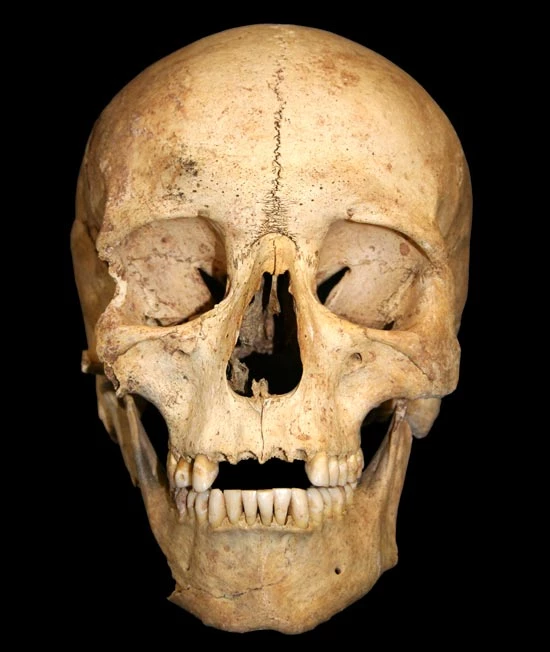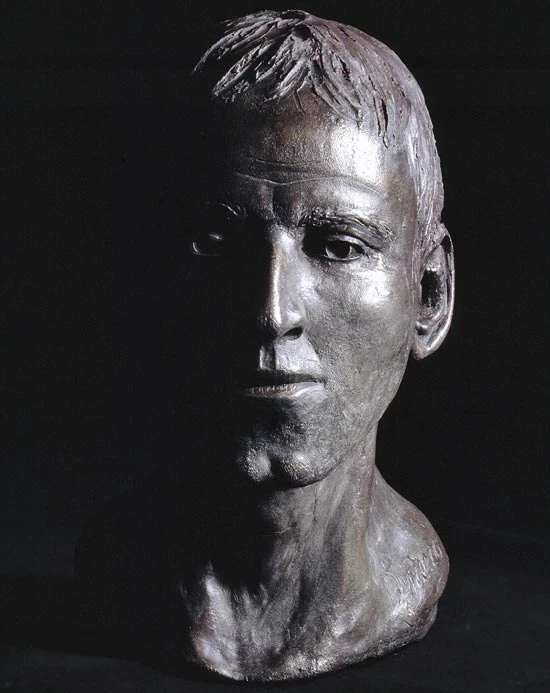The face of a 6,000-year-old man
The Penywyrlod Head
The Penywyrlod Skull.
One of the few complete Stone Age skulls yet to have been discovered in Wales.
A rare Stone Age skull discovered in a burial mound in Powys has given scientists the opportunity to reconstruct the face of a 6,000-year-old man, revealing that he was no hulking cave man but in fact very similar looking to modern man.
In June 1972 at Penywyrlod, near Talgarth in Powys, a farmer began to quarry loose stone blocks from a grassed-over mound in one of his fields. The stone was to provide hardcore for his farmyard. It didn't take long before he came upon some larger stone slabs which lined a hole leading deeper into the mound. Within this chamber were piles of human bone.
Prehistoric burial mound
The farmer contacted Hubert Savory, an archaeologist at the National Museum and an expert in prehistoric burial mounds, and Savory came to see the new find as soon as he could. This discovery must have come as a considerable surprise to him as archaeologists had been mapping burial mounds in this part of Wales for generations. Yet here was the largest and best preserved example in Powys — it had been completely missed!
An excavation revealed that the mound was a type of tomb in use from around 3,600 BC. It consisted of a rectangular stone mound which widened at its southeast end. Here the walls of the mound bowed inwards to create a forecourt. Piercing the sides of the mound were several stone-lined chambers, like the one the farmer had found.
A complete skull
The skull, partway through the reconstruction process carried out by Caroline Wilkinson of Dundee University.
By the time the excavation finished, the remains of at least six people had been found in the tomb chambers. But the star find was a complete skull — a very rare discovery — which belonged to a man who had died in his mid-20s.
The skull reveals no obvious cause of death, although it does tell us something about the man. His teeth were in good condition, but his nasal bones were slightly crooked and he had suffered from an inflammatory scalp disorder. The bones of his skull had also failed to fuse completely — the result of an inherited condition which would have caused him no inconvenience but would have given him a broader forehead than normal for the time, and a dimpled chin.
Facial reconstruction
The finished face, cast in bronze resin and currently on display in the Origins Gallery of National Museum Cardiff.
As a skull, the man's story ends there, but in 2005 Caroline Wilkinson from Dundee University was commissioned to produce a forensic reconstruction of his face. Caroline's work involves taking a plaster cast of the skull and positioning pins on it to indicate the likely depth of flesh at a number of key locations. These depths are based on measurements from the faces of modern people of similar racial type. Clay is then used to build up the layers of muscle, before skin and hair are added. The style of hair cut and facial hair is of course subjective.
The figure revealed is startling. This was no hulking cave man; 6,000-year-old man looks as modern as anyone walking the streets today. The people who built this tomb and buried their dead in a pile of bones may have followed cultural traditions that seem strange to us, but they were not primitives. We are not better than them, just different.
Article author:
Dr Steve Burrow, Earlier Prehistorian, Department of Archaeology & Numismatics, Amgueddfa Cymru


